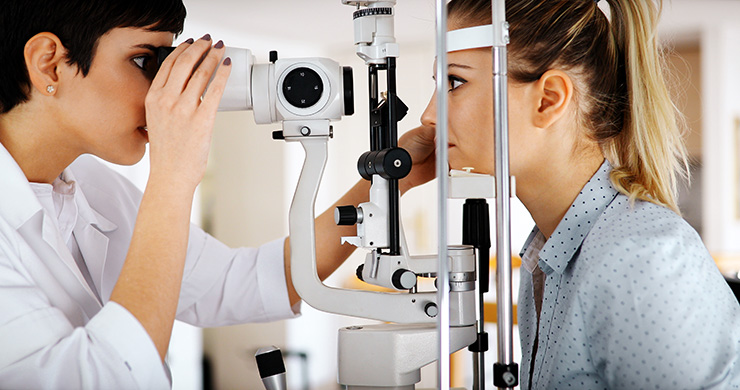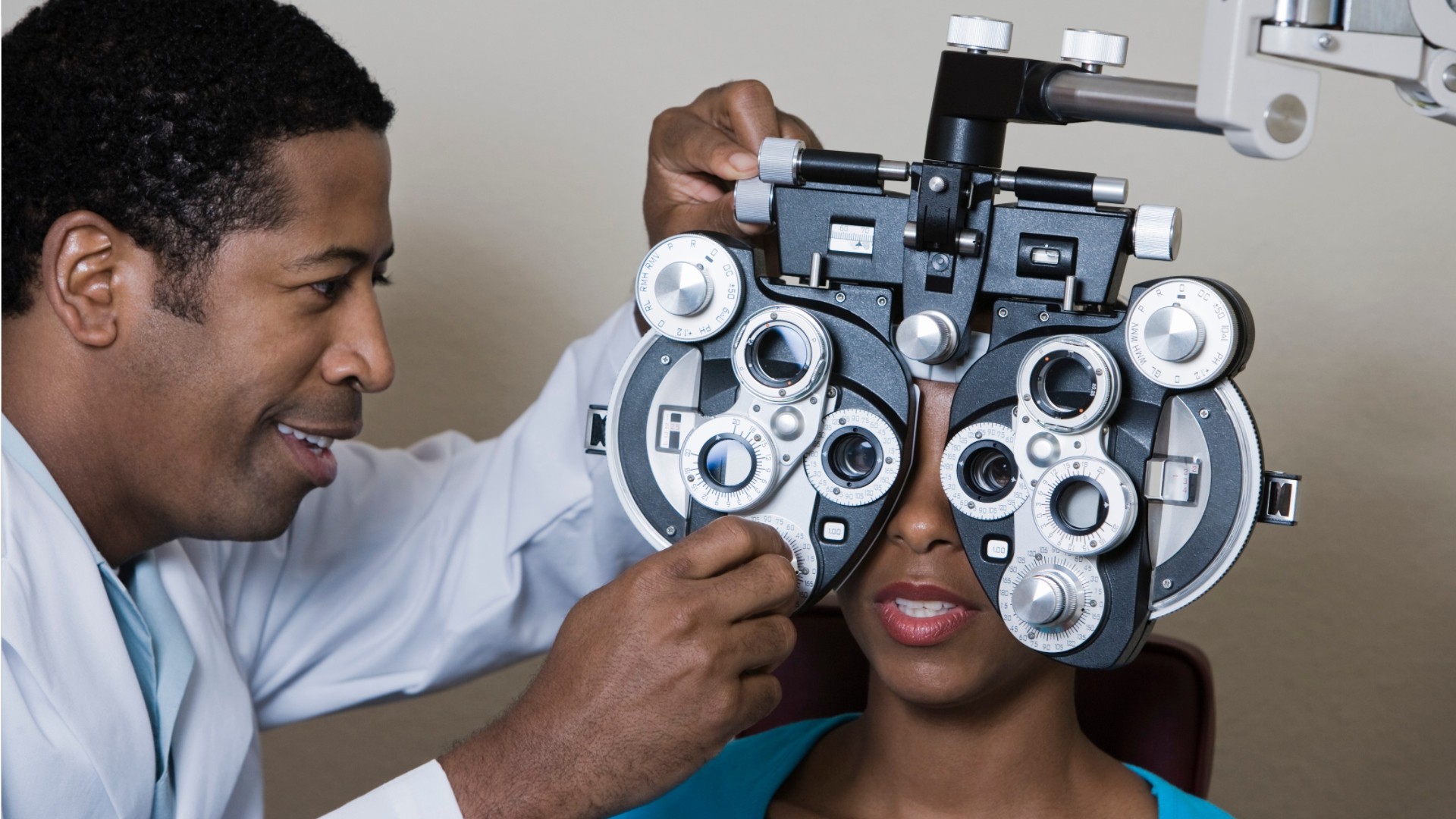Understanding the Function of Your Eye Doctor in Preserving Vision
Understanding the Function of Your Eye Doctor in Preserving Vision
Blog Article
Checking Out the current Technological Developments in Optometry and What They Mean for Optometrists
From the accuracy of Optical Comprehensibility Tomography to the nuanced understandings used by AI-driven diagnostic tools, these innovations are establishing new requirements in client assessment and treatment. As these developments penetrate the practice, optometrists are encountered with the obstacle of welcoming these devices to enhance client results.
Advancements in Diagnostic Devices
Advancing the field of optometry, developments in diagnostic tools have reinvented the means eye treatment professionals examine and detect aesthetic problems and eye problems. The past decade has observed substantial technological developments, making it possible for more detailed and precise assessments. Optical Comprehensibility Tomography (OCT), for instance, supplies high-resolution cross-sectional pictures of the retina, enabling the very early detection of diseases such as glaucoma and age-related macular deterioration. This non-invasive imaging technique has actually come to be important in contemporary optometric practice.
Another key innovation is the intro of sophisticated corneal topography systems, which map the surface area curvature of the cornea with precision. These devices are particularly beneficial for suitable contact lenses and identifying corneal problems. Electronic retinal imaging has changed conventional ophthalmoscopy, using detailed, panoramic views of the retina that help with detailed aesthetic exams.
The growth of wavefront aberrometry has actually additionally been critical, allowing the evaluation of refractive mistakes with unequaled accuracy (Eye Doctor Optometrist). This modern technology assists in customizing corrective lenses and improving surgical results for refractive surgical treatments. Collectively, these diagnostic advancements empower optometrists to supply exceptional individual treatment, making sure early intervention and customized treatment techniques, ultimately enhancing visual health results
AI in Person Monitoring
Building on the foundation of cutting-edge analysis devices, the incorporation of man-made intelligence (AI) in person administration stands for a transformative jump for optometry. AI systems are progressively employed to enhance effectiveness, precision, and personalization in individual care. By examining huge quantities of information, AI can determine patterns and anticipate potential eye conditions, allowing eye doctors to tailor treatments much more properly. This ability is critical in managing chronic eye conditions such as glaucoma and diabetic person retinopathy, where very early discovery and continual surveillance are key.
Furthermore, AI-driven platforms facilitate streamlined client communications and management procedures. Automated organizing, digital assessments, and individualized follow-up plans not just improve person fulfillment but likewise maximize time administration for experts. These systems can triage patients based upon the urgency of their conditions, guaranteeing that those in essential need obtain prompt attention.
Moreover, AI boosts decision-making by offering optometrists with evidence-based referrals and treatment pathways. By integrating information from electronic health and wellness documents, AI devices offer insights that educate scientific decisions, decreasing the threat of mistakes and enhancing individual results. As AI remains to progress, its function in person management will likely increase, reshaping the landscape of optometric treatment.
Advancements in Retinal Imaging
In the world of optometry, retinal imaging has witnessed exceptional technical advancements that are boosting analysis capacities and person treatment. Innovations such as Optical Coherence Tomography (OCT) and fundus photography have actually transformed just how optometrists analyze the retina and imagine. OCT, particularly, provides high-resolution, cross-sectional pictures of the retina, permitting the thorough examination of its layers. This capability is vital for very early detection and administration of problems like glaucoma, diabetic person retinopathy, and age-related macular deterioration.
Enhanced imaging techniques like OCT angiography are additional refining diagnostic precision. Eye Doctor. Such improvements promote the identification of min retinal adjustments that might signify disease development.
In addition, improvements in expert system are enhancing retinal imaging by enabling automated evaluation of large datasets. These systems help eye doctors in identifying patterns indicative of pathology, consequently boosting diagnostic accuracy and performance. Jointly, these technologies are transforming retinal imaging right into a keystone of modern eye treatment, boosting results and broadening healing opportunities.
Teleoptometry's Growing Duty
Teleoptometry is significantly ending up being a vital component of eye treatment, driven by developments in digital interaction and diagnostic tools. As optometry embraces electronic improvement, teleoptometry helps with remote examinations, enabling optometrists to expand their solutions beyond traditional limits. This is particularly advantageous in rural and underserved locations where access to specialized eye care is commonly minimal. By leveraging high-resolution video clip conferencing and advanced retinal imaging, eye doctors can carry out comprehensive eye examinations from afar, guaranteeing prompt medical diagnosis and treatment.
The combination of expert system (AI) further improves teleoptometry, allowing the evaluation of visual data and aiding in the detection of ocular problems such as glaucoma and diabetic person retinopathy. AI-powered formulas can quickly interpret intricate imaging data, giving eye doctors with beneficial insights that strengthen scientific decision-making.
Moreover, teleoptometry supports connection of treatment with seamless dig this combination with electronic health records (EHRs), permitting eye doctors to keep thorough individual backgrounds. When seeking advice from with different practitioners., this makes certain that individuals obtain tailored and constant treatment also.
In spite of these advantages, obstacles remain, consisting of making sure data security and handling patient assumptions. Teleoptometry represents a considerable stride in the direction of more obtainable, reliable, and patient-centered eye treatment. As technology advances, its role is positioned to expand additionally.

Future Patterns in Eye Care
A myriad of cutting-edge trends is set to improve the future of eye treatment, driven by technological developments and the progressing demands of individuals. One considerable fad is the combination of expert system (AI) in diagnostics, which assures to boost the accuracy and performance of eye evaluations. AI algorithms can analyze substantial quantities of data from retinal images, potentially discovering conditions like diabetic retinopathy and glaucoma i thought about this earlier than typical methods.
Furthermore, customized medication is gaining traction in optometry, with genetic screening informing tailored therapy strategies. This technique aims to enhance individual results by customizing interventions to individual hereditary accounts. Wearable innovation, such as wise call lenses, is likewise imminent, using real-time tracking of intraocular stress or sugar levels, therefore offering constant understandings right into eye and systemic health and wellness.
The adoption of augmented reality (AR) and online reality (VIRTUAL REALITY) in training and client education is an additional emerging pattern. These modern technologies provide immersive experiences that can improve understanding and skills both for optometrists and patients. As these patterns evolve, optometrists should remain abreast of technological advancements to supply advanced treatment, making certain enhanced client results and fulfillment in the vibrant landscape of eye care.
Final Thought

Collectively, these diagnostic innovations equip optometrists to deliver premium patient treatment, making certain early intervention and customized therapy techniques, ultimately enhancing aesthetic health end results.

As these innovations continue to progress, optometrists should adjust and include them into method, inevitably Visit Your URL maximizing workflow efficiency and raising the criterion of eye treatment delivered to individuals.
Report this page